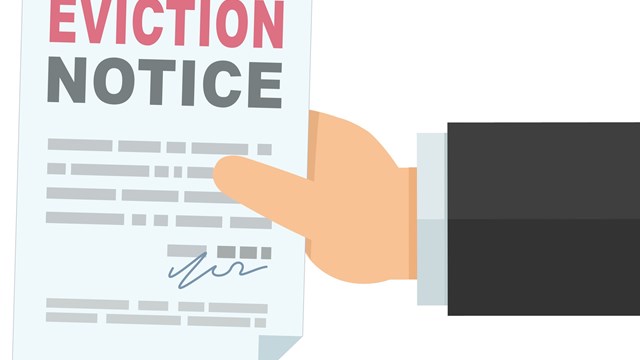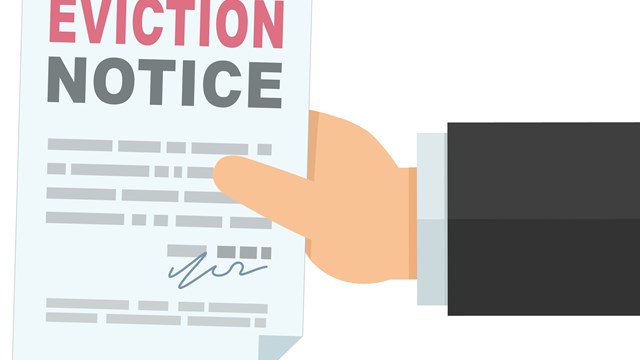
It’s little surprise to many that the residents of luxury apartment buildings spend less time in their apartments than their less well-off neighbors. Second and even third homes are the reality for many wealthy shareholders and unit owners—but that reality can pose challenges for the boards and management of buildings in which many residents are absent for extended periods of time.
Echo Empty
When a shareholder or unit owner closes the door and turns the lock for a three-month sojourn at their country house a time zone away, they rarely think of the scenarios that keep their property manager up at night during those absences.
“The biggest concern is the impact even a single vacant unit can have on building systems, especially water systems and plumbing,” says Jaime Sikorski, vice president at AKAM, a property management firm with offices in New York and Florida. “Luckily you can avoid freezing or build-up in pipes and lower the potential for water damage during vacancy by working with your management team” to alert them of an upcoming extended absence, and take their recommended measures to safeguard your pipes and other plumbing against these issues.
According to Sikorski, another challenge is package and delivery management. Auto-deliveries are very convenient, but forgetting to suspend one before leaving town can cause package room chaos, which can lead to lost or damaged items. Sikorski says that “establishing clear lines of communication with residents is key in any circumstance so the management and property staff can check in regularly during these time periods” and make sure deliveries are kept organized and secure until the recipient is back home.
Sometimes, the absence issue starts before an owner actually leaves. Dan Wollman, CEO of Gumley Haft, a management firm based in Manhattan, explains: “Many owners have big apartments—six rooms and more—but tend to really only live in two or three of those rooms. They may have more than one bathroom, but use only one. They don’t tend to walk around the apartment when they’re home, looking at ceilings and walls to see if something is wrong, like a leak or a window problem. They don’t go into their other bathrooms, so they don’t know there is a leak. Then when they leave for long periods, that situation becomes even more acute. It’s a big issue. If you’re not there, how would we know there’s a problem before it morphs to the apartment below you?”
For this reason, “monitoring unoccupied apartments becomes paramount,” says Danielle Calcagno, a vice president with FirstService Residential in New Jersey. “For instance, it’s much more challenging to mitigate the damage if there’s a leak in an unoccupied apartment than in other apartments and common areas of the building.” To help stay ahead of this kind of problem, says Calcagno, “we ask our unit owners and residents to notify us if they expect to be away for more than two weeks.”
Information Is Power
Multiply the aforementioned concerns and possible scenarios by the number of residents who leave at around the same time, and you have a sense of why a half-empty building can be almost as much of a challenge to run as a fully occupied one.
There are two key factors in maintaining control over the many moving parts in a residential building: knowledge of the structure itself, and communication with the people in it. Managers should have a thorough, almost second-nature knowledge of the building. They should be able to practically sleepwalk their way through the structure and know where plumbing lines and controls are, as well as other basic systems. “Managers should be familiar with the layout of the building and have easy access to information about common area mechanicals, such as how the building is heated,” says Brad Grayson, senior community manager at PRG Management, based in Chicago. “They should know how to get into specific system areas, like water heaters, electric boxes, and other common elements. Being able to get a vendor into a property and into the spots they need access to are both key in emergencies.”
Managers should also have full knowledge of where an absent apartment owner is and how to contact him or her at all times. According to Grayson, “Residents should let a trusted neighbor or the board know they are going to be gone for a while, and leave a way to get access to their unit in case of emergency. Depending on how long they’re gone, allowing someone to enter the apartment to check on things from time to time is also a very good policy.”
Information is the key to avoiding a potential disaster. “Owners should always make sure that the management company has their current email, phone number, and emergency contact information,” says Bruno Bartoli, director of management services for Evergreen Management located in Bedford, New Hampshire. “We also recommend that the owner provide a local friend or neighbor with the unit keys in case of emergency. One school of management practice is that the management company should not have the unit keys to avoid any liability and potential legal ramifications. An alternative option is a Knox Box, which allows first responders to gain access to a unit in case of an emergency.”
An Unfortunate Case in Point
While most residents may consider a major leak or other system breakdown that can cause extensive damage rare, management knows better. They can—and do—happen often, and can affect multiple units and common areas at the same time. A case in point is offered by Wollman. “We had an instance over a Labor Day weekend,” he recounts, “in a pre-war building. A toilet with a flushometer broke. The water fill popped off and it started to leak. The leak went undetected for over five hours—and remember, it was Labor Day weekend. The building was nearly empty. We didn’t find out about the leak until it got to the basement. No one was home from the second to the tenth floor. This leak displaced five families for nearly a year. There was a massive insurance claim. All because people weren’t at home.”
That’s not to say that apartment owners should never leave their apartments, of course—but notice to management and in some instances the installation of leak and flooding sensors is a practical idea for buildings where many residents leave for long periods of time.
When Absence Makes the Heart Grow Fonder
Conversely, there are situations when less is more, and fewer people in a building may actually be beneficial. For example, when major capital projects are underway, it is sometimes beneficial for residents to be away.
“This depends on the project though,” says Grayson. “There are times when unit access is needed and having to coordinate with an off-site owner can prove to be difficult.” That difficulty can be resolved by simply giving key access to management. “One benefit of having people out of the building is that fewer residents are inconvenienced by the noise and dirt issues associated with construction,” Grayson continues. “Fewer people in the building also gives contractors more freedom to use elevators and parking spaces and being able to work quicker without pausing to allow residents to live their everyday life.”
“When owners are absent, contractors can work more freely and for longer hours as they will not be disturbing residents,” agrees Bartoli. “But if there is an accident or emergency during a capital project, it is helpful to have an owner present in case a worker needs to enter the home. For example,” he continues, “if a building or unit has a roof or siding replaced, we ask owners to remove valuables, such as paintings and clocks, from the walls so that the pounding or other activity does not dislodge them from the wall. You would be surprised at how many owners come back home to find valuable home items on the floor as a result of necessary construction methods used on the exterior roof and walls.”
In addition to big capital projects, a more lightly populated building makes certain other work easier too. “When people are away,” Sikorski adds, “it’s a good opportunity to plan for and schedule preventive maintenance and deep cleaning tasks.”
Another issue is more practical than physical: holding meetings, votes, and other community governance and administrative functions when a significant portion of community members aren’t on site. Fortunately, that’s far less of a hurdle than it was even five years ago. “As far as meetings, voting, and other board-related initiatives,” says Sikorski, “vacancies have had less impact now thanks to technology. Many important meetings can still be arranged and take place virtually.”
“In my case,” says Calcagno, “my board meetings, both open and closed, are held on the Zoom meeting platform. As a result, I have experienced far more participation in these meetings than when they were held in person, and we have no issues accommodating away residents. Indeed, they prefer this type of access for that very reason.”
Absentee occupants can be both a blessing and a curse. “During capital projects,” says Wollman, “the more who are out, the better. They are more comfortable, and there is less complaining, but we do need access. That’s critical.” Alternatively, large numbers of vacancies can be problematic for management. Their eyes have to be everywhere. The best solution? As with every aspect of multifamily community living, it’s communication—both from board and management to residents, and vice versa.
A J Sidransky is a staff writer/reporter for CooperatorNews, and a published author. He can be reached at alan@yrinc.com.









Leave a Comment